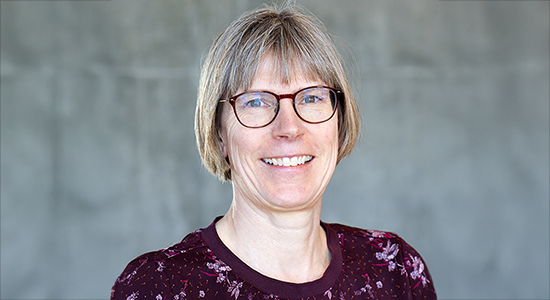Alkjær Group – Human Movement Science

We study human movement to help people maintain lifelong mobility and function.
We focus on the knee joint because it is the largest joint in the body; essential for walking, activities of daily living, and for sport participation. Thus, a healthy and pain free knee is imperative for an active life.
Knee osteoarthritis (OA) is the most common joint disease and a significant contributor to global disability. The known knee OA risk factors include obesity, surgery, occupational load and injury. Anterior cruciate ligament (ACL) rupture is a frequent knee injury, particularly among young people. An ACL injury or reconstruction often leads to functional impairments and increases the risk of knee OA.
Thus, our research shall contribute to:
- Prevent onset and progression of knee OA.
- Understanding the link between knee injuries and risk of onset/progression of knee osteoarthritis (OA).
- Understanding the biomechanics and function after knee injuries.
- Improve musculoskeletal function/rehabilitation after knee injuries.
- Knee injury prevention.
- Motion capture (12 cam Vicon-Nexus) & force plates (AMTI)
- Biomechanical movement analysis (3D inverse dynamics).
- Musculoskeletal modeling (OpenSim).
- Muscle strength assessments (isokinetics / Biodex dynamometer).
- Muscle activity assessments (electromyography).
- Pressure pain sensitivity assessments.
- Questionnaires (various patient reported outcome measures).
- Group concept mapping; mixed-method for stakeholder involvement (Groupwisdom™).
- REDCap electronic data capture tools hosted at Region H.
Our current research projects are listed below.
The effect of baseline knee pain on knee joint cartilage loss in anterior cruciate ligament reconstructed individuals
A target trial emulation based on the MIRAKOS cohort study (see below).
Funded by Åse og Ejnar Danielsens Fond (2025) and partly by the Oak Foundation.
Aim
To determine the effect of baseline knee pain versus no knee pain on knee joint space narrowing over a period of at least four years in ACL reconstructed individuals.
Method
This study is designed as a target trial emulation study, based on a the MIRAKOS cohort – see the study protocol for details.
Expectation
We expect that people with knee pain will have a greater loss of knee joint cartilage over time than those without pain. The study will help determine whether knee pain can be an early sign of knee osteoarthritis and strengthen prevention for this group.
Collaboration
The University of Copenhagen, The Parker Institute at Bispebjerg and Frederiksberg Hospital, the Sports Orthopedic Research Center at Amager-Hvidovre Hospital, and the Department of Radiology at Bispebjerg and Frederiksberg Hospital.
Musculoskeletal function in anterior cruciate ligament reconstructed individuals with and without knee pain
MIRAKOS, Innovation Fund Denmark 9088-00006B-under the frame of ERA PerMed (2019).

Publications
Bandak E, Stenroth L, Bosch W, et al. Knee muscle strength and movement biomechanics in individuals with and without knee pain after anterior cruciate ligament reconstruction: A cross-sectional study. Knee Surg Sports Traumatol Arthrosc. 2025. https://doi.org/10.1002/ksa.12630
Aim
To compare the musculoskeletal function between ACL reconstructed individuals with (“Symptomatic”) and without knee pain (“Asymptomatic”).
Method
Musculoskeletal function assessments - see study protocol for details.
Expectation
Detailed description and quantification of muscle function in two groups of ACL reconstructed individuals (Symptomatic, n=30) vs Asymptomatic, n=90). This will provide insight in possible needs for interventions and mechanisms that trigger early onset of knee OA.
Collaboration
Part of DEEPMECHANOKNEE.
A novel tool for personalized and socio-economically optimal treatment planning for patients with osteoarthritis
DEEPMECHANOKNEE under the frame of ERA PerMed (2019)

Aim
To develop an accurate and fast method to predict the progression of knee osteoarthritis over time.
Method
A multi-scale biomechanics and computational modelling, imaging, and clinical data are combined with a deep learning algorithm.
Expectation
This method can indicate (optimize) the best possible personalized treatment for a patient that could ultimately prevent or delay the progression of knee osteoarthritis.
Collaboration
University of Eastern Finland, Lund University, University of Oulu, University of Copenhagen and The Parker Institute, Bispebjerg and Frederiksberg Hospital, Copenhagen
Knee Injury Prediction in Sports (KNIPS)
Funded by The Ministry of Culture Committee on Research (2021).

Aim
To develop new concept for knee injury prediction/prevention in team ball sports.
Method
Group concept mapping; mixed-methods; involvement of key stakeholders.
Expectation
A conceptual model that can be used as a dialogue tool to facilitate knee injury prevention in team ball sports (handball and soccer).
Collaboration
The Parker Institute, Bispebjerg-Frederiksberg Hospital, Sports Orthopaedic Research Center-Copenhagen (SORC-C), Dept. of Orthopedic Surgery, Copenhagen University Hospital, Amager-Hvidovre, Dept. of Biomedical Sciences, UCPH.
Outcomes in children with anterior cruciate ligament (ACL) reconstruction (2015)
Aim
To understand how children with ACL reconstruction are evaluated and how they adapt/develop.
Method
Different methodological approaches: literature review (scoping review) and exploratory cross-sectional studies using existing cohort data in pediatric ACL patients and healthy controls.
Expectation
Improved understanding of the outcome after ACL injury and reconstruction in children with the potential to refine rehabilitation of these children to reduce risk of secondary injuries and functional impairments.
Collaboration
Department of Physical and Occupational Therapy, Bispebjerg and Frederiksberg Hospital, Department of Midwifery, Physiotherapy, Occupational Therapy and Psychomotor Therapy, Faculty of Health, University College Copenhagen, The Parker Institute, Dept. of Biomedical Sciences, UCPH.
- The Ministry of Culture Committee on Research
- Innovation Fund Denmark
- Åse og Ejnar Danielsens Fond
Group members
| Name | Title | Phone | |
|---|---|---|---|
| Elisabeth Ann Bandak | Assistant Professor | ||
| Lauri Stenroth | Guest Researcher | ||
| Mathias Munck Nikolajsen | Academic Staff | ||
| Tine Alkjær | Associate Professor |

Group Leader
Tine Alkjær
Associate Professor
Exercise and Muscle
Panum 22.5.24
Parker Instituttet
Phone +4528757216
talkjaer@sund.ku.dk
ORCID: 0000-0002-9105-3882
